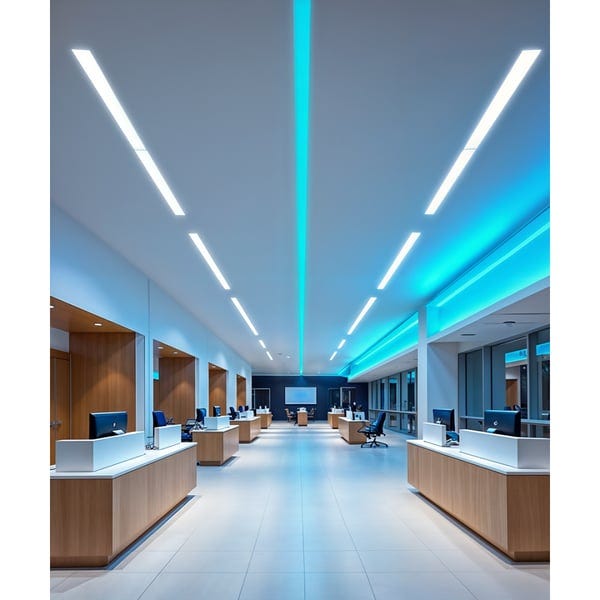Section 1: The Psychology of Color in Branding
- Explore how colors evoke emotions and shape perception (e.g., blue = trust, red = urgency, green = calm).
- Brands already use this in logos and interiors — dynamic lighting is the next evolution.
- Example: A tech brand might use cool blues during the day and warmer tones for evening events.
Section 2: How Color-Changing Lighting Enhances Brand Identity
- Reinforces a consistent visual identity across physical and digital touchpoints.
- Allows for flexibility — holiday themes, promotions, or seasonal brand campaigns.
- Enhances storytelling: brands can “set the stage” for different product lines or customer experiences.
Section 3: Real-World Examples
- Retail: Nike or Apple using lighting to highlight new product drops.
- Hospitality: Hotels using warm, welcoming colors in lounges and cool, calming tones in spas.
- Corporate Buildings: Using brand colors for lobbies and special events.
Section 4: Technology Behind the Glow
- Discuss DMX, RGB/RGBW LED systems, and smart control panels.
- Mention smart integrations: lighting synced to music, customer movement, or even weather.
- Touch on energy efficiency and scheduling automation.
Section 5: Marketing ROI & Customer Engagement
- Improved foot traffic and dwell time in retail.
- Social media value: customers are more likely to take photos in visually engaging spaces.
- Potential for data-driven lighting (e.g., changing colors based on customer analytics).
Section 6: Tips for Implementation
- Keep branding consistent — don’t overload with too many colors.
- Work with lighting designers to align visual goals with technical realities.
- Start with accent lighting before going full-building if budget is a concern.
Conclusion
- Recap: Dynamic lighting is more than decoration — it’s branding in motion.
- Emphasize the forward-thinking nature of color-changing lighting as part of a brand’s evolving identity.
Optional Add-Ons:
- Checklist: “5 Things to Consider Before Installing Color-Changing Lighting”
- Quote Box: Add a quote from a lighting designer or marketing expert.
- Photos/GIFs: Include before-and-after examples or short animations of changing lights.


